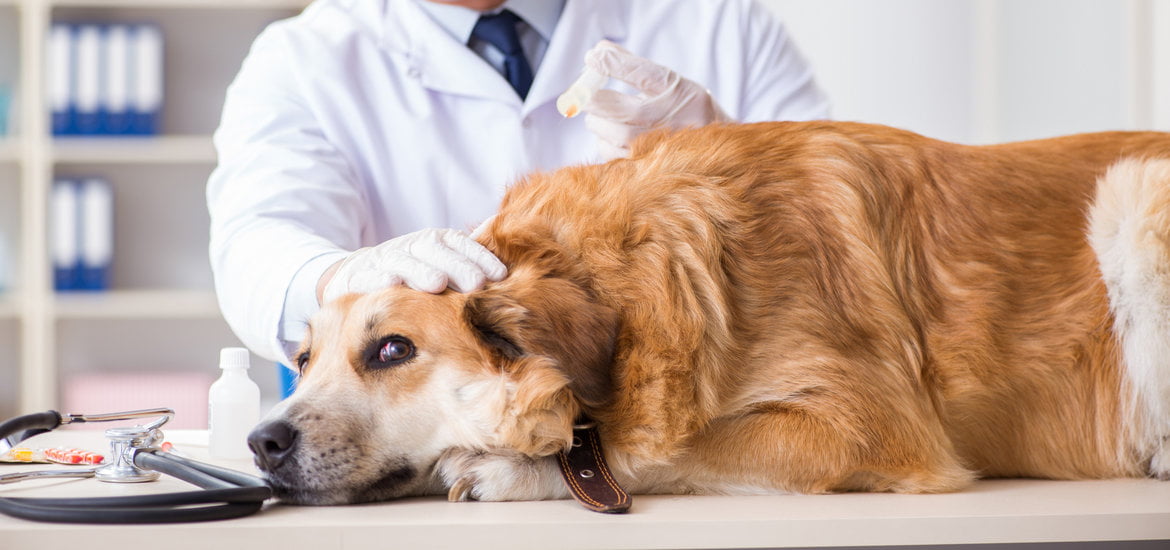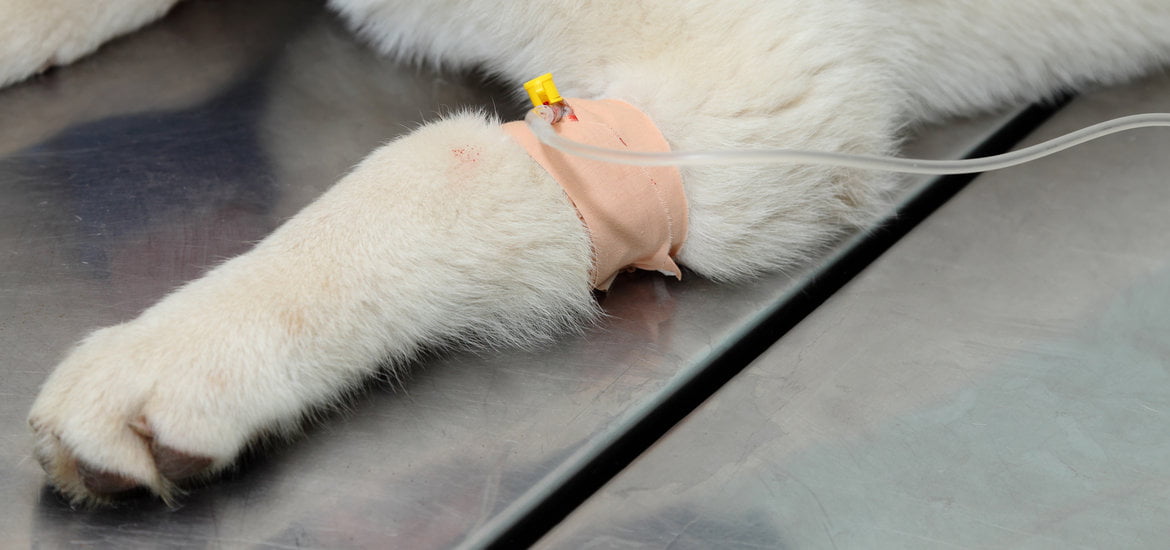Mar 10, 2020, 10:59 AM
Most dog owners are understandably worried at the thought of having their pet administered with a general anesthetic. An anesthetic is commonly given to an animal to make it unconscious and thereby relieve pain associated with the corresponding surgery or dental procedure. These drugs are also sometimes used while performing procedures such as X-Rays and Scans, since the animal may not always stay still.
Almost all dogs require anesthesia at some point in their life. Puppies, for example, are put under anesthesia when they are to be spayed or neutered. Anesthetic drugs are typically classified into three, namely – sedation, local anesthetic, and general anesthetic. While sedation drugs are used to keep the dog or puppy in a state of artificial sleep, local anesthetics are drugs that help to block nerve transmission on specific nerve pathways.
Of the three types of anesthetics mentioned above, general anesthesia is widely considered as the most dangerous as it always carries some risk to the patient. These anesthetics work by suppressing your dog's nerve response and all higher brain function, thereby keeping the animal in an unconscious state for however long they last in the system.

How Dangerous are Anesthetics for Dogs?
As already mentioned, anesthetic induction is a requirement to perform a multitude of surgical procedures. Irrespective of the duration for which an animal is put under anesthesia, there is always a risk when it comes to administering local or general anesthesia. In terms of numbers, studies tell us that 1 in every 100,000 dogs develop some form of reaction when subjected to an anesthetic.
* The reactions induced as a result of anesthetic administration can be either mild such as swelling or severe such as anaphylaxis.
Although the numbers may seem to be alarming, there are several things that you, as a pet owner, can do to minimize such risks. The first thing you should ensure is that the anesthetic opted by your veterinarian is from a tried and tested brand such as Vetpharma. As one of the highly respected names within the industry, the brand has earned its reputation through several decades of innovation and strict adherence to safe manufacturing practices.
Tips to Reduce Anesthesia Induced Risks in Dogs
Before any veterinary anesthetic procedure, let your veterinarian know in detail about your dog's medical history. From the animal's vaccine and medication history to its general lifestyle, share with the veterinarian all factors that might influence how it responds to anesthesia. In certain individual cases, a presurgical examination and diagnostic tests may be recommended to identify any underlying conditions.
Commonly suggested diagnostic tests:
- Electrolyte Test – Helps to identify if the animal is dehydrated or is suffering from an electrolyte imbalance.
- Chemical Test – Helps to evaluate sugar level along with kidney, liver, and pancreatic function.
- CBC Test – This test helps to identify blood-related conditions.
Apart from the tests mentioned above, your vet may also suggest one of the processes be conducted before an anesthetic event:
- Intravenous (IV) Cannulation – A procedure by which a small catheter is inserted into the peripheral vein of the animal to provide it with the anesthetic agent and IV fluids. It also serves as a pathway to administer resuscitative medication if needed.
- Administration of IV Fluids – In any surgical procedure, administration of IV fluids is a necessity to maintain hydration and blood pressure. These also help to remove anesthetic agents from the liver and kidney quickly, thereby aiding the recovery process.
How to Prepare for the Anesthetic/Surgical Event
Be sure to ask your veterinarian about any questions that you may have well ahead of the procedure. For any anesthetic procedure, you, as the pet owner, will be required to sign a consent form that will contain all the details related to the surgery. Your veterinarian will also ask you to withhold giving any food to the animal before the procedure.
Anesthetic Monitoring: What You Need to Know
Before any anesthetic procedure, your clinic will put in place several safeguards to minimize your dog's risk during the surgery. Some of these include:
- A dedicated surgical assistant shall be present at all times to monitor the animal's vitals and make suitable adjustments to the anesthetic levels during the surgery.
- For surgical procedures of longer duration, it is necessary to ensure that the animal's core body temperature remains within the desired limits. Erratic changes to the body temperature are most often a sign of complications.
- In conscious animals, a drop in the oxygen level results in increased respiratory and heart rate. However, in an anesthetized animal, there will be no such response to falling oxygen levels. A pulse oximeter is widely used within veterinary practices to monitor the level of oxygen along with its pulse rate in animals. CO2 is also sometimes monitored along with O2 levels, as it helps to provide more accurate results.
- A heart monitor is used to monitor the dog's heart rate and subsequently increase or decrease the anesthetic levels.
- An Electrocardiogram (ECG) is another equipment commonly used to track the dog's heart rate. Helps the vet to make suitable adjustments to the anesthetic levels, if and when required.
- Along with its blood pressure, heart rate, and O2 levels, it is also essential to monitor the cardiovascular condition of the animal while being anesthetized. Blood pressure monitors are widely used within veterinary practices to serve this purpose.

How Long Will It Take Your Dog to Recover from an Anesthetic Event?
After the completion of the surgery or anesthetic procedure, the animal remains under observation until they wake up and have the right body temperature. The use of high-quality anesthetic agents such as those provided by Vetpharma enables quick recovery. After the surgery, be sure to follow all the post-care instructions provided by the veterinarian, including feeding instructions.
